Terraform has been the go-to tool for infrastructure as code for years, but let’s be honest – it’s not perfect. Between wrangling YAML files, wrestling with provider quirks, and trying to stay sane during deployments, many teams are hunting for something smoother, faster, and a little less… finicky. Luckily, the landscape has matured, and there are plenty of alternatives that let you manage cloud resources without getting lost in a tangle of scripts and configs. In this article, we’ll break down the best options worth checking out in 2025, whether you’re a solo dev or part of a fast-moving team.

1. AppFirst
AppFirst offers a different approach to managing cloud infrastructure by letting teams define the resources their applications need while the platform handles the underlying setup automatically. Instead of manually writing Terraform, CDK, or YAML, teams can focus on their applications while the infrastructure is provisioned according to cloud best practices. The system works across major cloud providers like AWS, Azure, and GCP and provides centralized visibility into costs, auditing, and monitoring.
The platform simplifies tasks that typically slow down development, such as security standardization, logging setup, and network configuration. By automating these processes, AppFirst reduces the need for dedicated DevOps resources and allows teams to deploy faster without handling low-level infrastructure management themselves.
Key Highlights:
- Automatic provisioning of cloud resources across AWS, Azure, and GCP
- Built-in logging, monitoring, and alerting
- Centralized auditing and cost visibility by app and environment
- Works with SaaS or self-hosted deployment options
- No requirement for dedicated infrastructure teams
Who it’s best for:
- Developers who want to focus on application features rather than infrastructure
- Teams moving quickly and looking to reduce DevOps overhead
- Companies standardizing cloud best practices without building custom tooling
- Organizations needing cross-cloud deployment support
- Teams wanting transparent cost tracking and compliance monitoring
Contact Information:
- Website: www.appfirst.dev

2. Red Hat Ansible Automation Platform
Red Hat Ansible Automation Platform helps teams manage cloud and on-premises infrastructure by automating repetitive tasks and configuration management. It uses playbooks to define automation workflows, making it easier to apply consistent settings across multiple systems. Teams can handle provisioning, software installation, and updates without manually writing low-level scripts, which can reduce errors and free up time for other tasks.
The platform integrates with a range of operating systems and cloud environments, providing tools for analytics, monitoring, and content collections that include pre-built modules and roles. By streamlining routine operations, teams can maintain control over complex infrastructure setups while avoiding the overhead of manually maintaining configurations or learning multiple provider-specific frameworks.
Key Highlights:
- Automation using playbooks for configuration and management
- Supports multiple operating systems and cloud platforms
- Access to pre-built content collections with modules and roles
- Integration with analytics and monitoring tools
- Can be deployed on-premises or in hybrid cloud environments
Who it’s best for:
- Teams looking to reduce manual configuration tasks
- Operations teams managing multiple systems across environments
- Organizations wanting to standardize setups across clouds and OSs
- Developers or engineers who want to automate repetitive infrastructure tasks
- Teams interested in leveraging pre-built automation content for faster setup
Contact Information:
- Website: www.redhat.com
- E-mail: apac@redhat.com
- Facebook: www.facebook.com/RedHat
- Twitter: x.com/RedHat
- LinkedIn: www.linkedin.com/company/red-hat
- Address: 100 E. Davie Street Raleigh, NC 27601, USA
- Phone: 8887334281
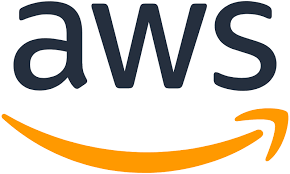
3. AWS CloudFormation
AWS CloudFormation allows teams to define and manage cloud infrastructure using code. By creating templates that describe resources and their configurations, they can automate provisioning, updates, and scaling across multiple AWS accounts and regions. This approach helps keep infrastructure consistent and reduces the chance of manual errors when managing large environments.
The platform integrates with a wide range of AWS services and provides tools for monitoring, deploying, and managing applications. Teams can leverage pre-defined templates from the CloudFormation registry or create custom templates for specific setups, enabling a structured approach to infrastructure management without manually configuring each resource.
Key Highlights:
- Infrastructure as code with templates for AWS resources
- Automation of provisioning, updates, and scaling
- Works across multiple accounts and regions
- Access to pre-defined templates from the CloudFormation registry
- Integration with AWS services for monitoring and deployment
Who it’s best for:
- Teams managing large AWS environments
- DevOps and operations teams automating deployments
- Organizations needing consistency across accounts and regions
- Developers working with multiple AWS services
- Teams using CI/CD pipelines for infrastructure updates
Contact Information:
- Website: aws.amazon.com
- Facebook: www.facebook.com/amazonwebservices
- Twitter: x.com/awscloud
- LinkedIn: www.linkedin.com/company/amazon-web-services
- Instagram: www.instagram.com/amazonwebservices
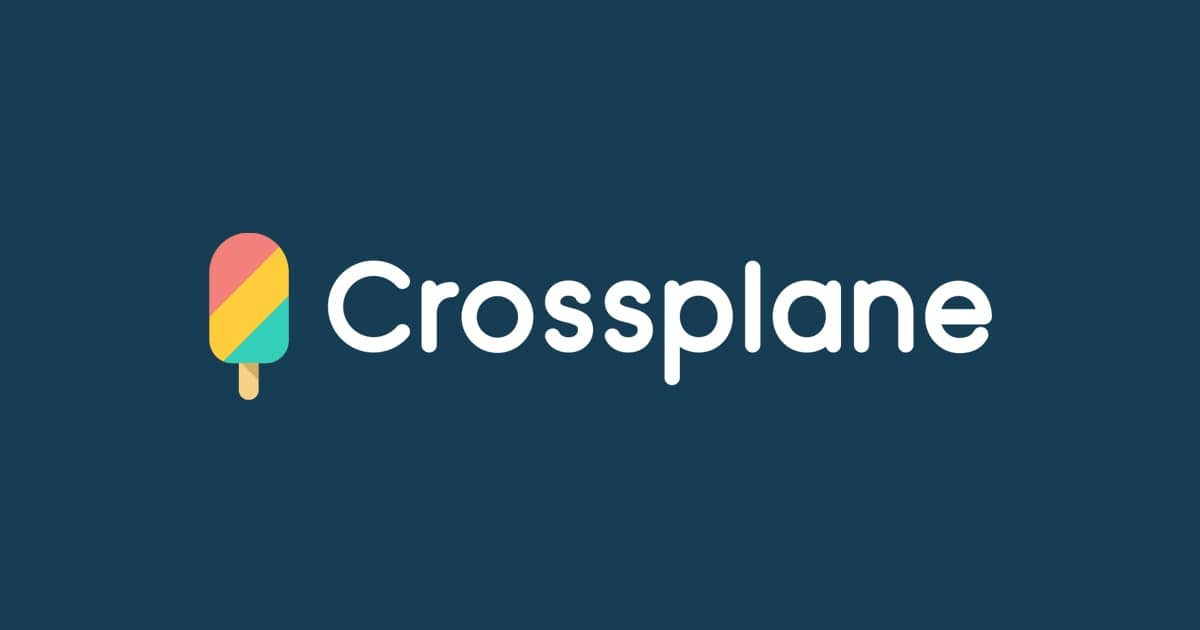
4. Crossplane
Crossplane provides a framework for teams to manage cloud infrastructure and applications by extending Kubernetes into a control plane. They can define custom APIs and policies that handle provisioning, access, and orchestration across multiple environments. This approach allows teams to automate resource management without locking themselves into pre-defined workflows, while still leveraging Kubernetes’ security and reliability features.
The platform is designed to be extensible, letting teams build new providers or configurations as needed. This flexibility supports a range of infrastructure and application use cases, giving teams the ability to tailor the control plane to their specific needs. By integrating with existing cloud-native tools, Crossplane helps keep resource management consistent and declarative across different platforms.
Key Highlights:
- Builds on Kubernetes to extend control to infrastructure and applications
- Allows creation of custom APIs and policies for automation
- Extensible with providers and configurations for new use cases
- Integrates with cloud-native tools and workflows
- Open source and community-driven
Who it’s best for:
- Teams already using Kubernetes looking to manage more than containers
- Platform engineers building custom control planes
- Organizations needing consistent orchestration across multiple clouds
- Teams wanting flexibility to define their own infrastructure policies
- Developers and operations teams integrating declarative APIs for resource management
Contact Information:
- Website: www.crossplane.io
- Twitter: x.com/crossplane_io
- LinkedIn: www.linkedin.com/company/crossplane
5. Jenkins
Jenkins is an open-source automation server that teams use to handle continuous integration and continuous delivery workflows. They can set up pipelines to build, test, and deploy applications automatically across different environments. By using plugins and integrations, teams can connect Jenkins to a variety of tools, making it flexible for different development setups without manually running each step.
The platform supports distributed workloads, allowing jobs to run across multiple machines to speed up builds and testing. With its plugin architecture, teams can extend functionality to meet specific project needs or integrate with other infrastructure management tools. Jenkins provides a structured way to automate repetitive tasks and maintain consistency throughout the software lifecycle.
Key Highlights:
- Supports CI/CD pipelines for building, testing, and deploying applications
- Extensive plugin ecosystem for integrating with many tools
- Runs across multiple machines for distributed workloads
- Web interface for easy setup and configuration
- Open-source and community-driven
Who it’s best for:
- Development teams managing continuous integration and delivery
- Organizations needing automation for repetitive build and deploy tasks
- Teams working with multiple programming languages or environments
- DevOps engineers looking for a flexible, extensible automation server
- Projects requiring distributed builds or testing across several machines
Contact Information:
- Website: www.jenkins.io
- Twitter: x.com/jenkinsci
- LinkedIn: www.linkedin.com/company/jenkins-project

6. Pulumi
Pulumi provides a platform for managing cloud infrastructure using familiar programming languages instead of a domain-specific language. Teams can define, deploy, and manage resources in TypeScript, Python, Go, C#, Java, or YAML, allowing them to apply standard coding practices, loops, and functions to infrastructure tasks. This approach lets them treat infrastructure as software, with versioning, testing, and reusable components, across different cloud providers and regions.
The platform also integrates features for policy enforcement, secret management, and multi-cloud visibility. Teams can automate infrastructure workflows, track changes, and ensure compliance without juggling multiple tools. By unifying coding and operational tasks, Pulumi helps teams maintain consistent environments while reducing repetitive manual steps.
Key Highlights:
- Supports multiple programming languages for defining infrastructure
- Infrastructure as code with testing and reusable components
- Cross-cloud deployment capabilities
- Integrated secrets management and policy enforcement
- AI-assisted automation for complex infrastructure tasks
Who it’s best for:
- Development teams comfortable with programming languages
- Organizations managing multi-cloud or multi-region environments
- Teams needing automated policy enforcement and compliance
- Platform engineers building self-service infrastructure workflows
- Teams looking to reduce repetitive infrastructure management tasks
Contact Information:
- Website: www.pulumi.com
- Twitter: x.com/pulumicorp
- LinkedIn: www.linkedin.com/company/pulumi
- Address: 601 Union St., Suite 1415 Seattle, WA 98101
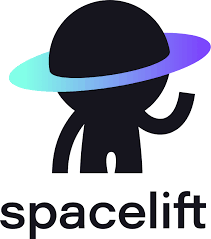
7. Spacelift
Spacelift focuses on orchestrating infrastructure workflows across multiple tools like Terraform, OpenTofu, Ansible, and CloudFormation. Teams can set up automated pipelines that handle provisioning, configuration, and governance in a single workflow. This allows them to standardize processes, reduce manual interventions, and maintain visibility across environments while still giving developers the flexibility to work independently.
The platform also provides features for resource governance, drift detection, and policy enforcement, making it easier for platform teams to maintain control without slowing down development. By combining orchestration with integration into existing CI/CD systems, Spacelift helps teams manage infrastructure at scale while keeping workflows consistent and auditable.
Key Highlights:
- Supports multiple IaC tools in one workflow
- Automates provisioning, configuration, and governance
- Built-in drift detection and policy enforcement
- Enables self-service provisioning for developers
- Integrates with CI/CD and version control systems
Who it’s best for:
- Teams managing infrastructure at scale
- Organizations using multiple IaC tools
- Platform teams needing oversight and governance
- Developers who benefit from self-service workflows
- Companies aiming for consistent, auditable infrastructure processes
Contact Information:
- Website: spacelift.io
- E-mail: info@spacelift.io
- Facebook: www.facebook.com/spaceliftio-103558488009736
- Twitter: x.com/spaceliftio
- LinkedIn: www.linkedin.com/company/spacelift-io
- Address: 541 Jefferson Ave. Suite 100 Redwood City CA 94063

8. Scalr
Scalr provides a framework for managing Terraform and OpenTofu workflows while giving platform teams control over self-service environments for developers. Teams can set up isolated workspaces, apply flexible role-based access controls, and monitor pipelines to make sure infrastructure changes happen safely. This setup helps maintain a balance between developer autonomy and platform governance, especially when multiple teams work across the same infrastructure.
The platform also emphasizes workflow flexibility and standardization. Developers can use CLI-driven tools, GitOps-style workflows, or no-code modules, while platform teams can enforce policies, track activity, and set up notifications for failed runs or drift events. This combination allows organizations to scale infrastructure practices without losing oversight or consistency.
Key Highlights:
- Supports Terraform and OpenTofu with flexible workflows
- Isolated environments for each team
- Role-based access controls and pipeline observability
- Policy enforcement and drift monitoring
- Multiple workflow options: CLI, GitOps, or no-code modules
Who it’s best for:
- Platform teams managing multi-team infrastructure
- Organizations adopting Terraform or OpenTofu
- Developers needing self-service environments
- Teams wanting workflow flexibility with governance
- Companies aiming to standardize infrastructure practices across teams
Contact Information:
- Website: scalr.com
- Twitter: x.com/scalr
- LinkedIn: www.linkedin.com/company/scalr
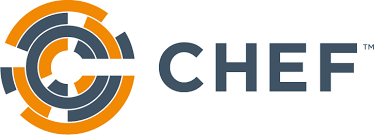
9. Chef
Chef focuses on automating and orchestrating infrastructure and operational workflows across on-premises and cloud environments. Teams can define infrastructure as code using pre-defined templates, manage configurations consistently, and enforce compliance policies across all nodes. The platform bridges different stages of the DevOps process, helping teams coordinate changes from development to deployment with a single control plane.
The platform also allows for environment-agnostic operations and agentless execution, giving teams flexibility in how they run jobs across hybrid setups. By combining configuration management, compliance auditing, and workflow orchestration, teams can maintain consistency, reduce manual errors, and manage operational complexity more efficiently. This makes it easier to scale infrastructure and maintain visibility over diverse environments.
Key Highlights:
- Pre-defined templates for workflows and incident management
- Infrastructure management with standardized configurations
- Continuous compliance audits
- Workflow orchestration across cloud and on-prem environments
- Environment-agnostic job execution and agentless automation
Who it’s best for:
- Enterprises managing hybrid or multi-cloud infrastructure
- Teams needing consistent configuration and compliance checks
- Organizations looking to automate operational workflows
- DevOps teams coordinating multiple stages of development and deployment
- Teams aiming to reduce manual errors in infrastructure management
Contact Information:
- Website: www.chef.io
- Facebook: www.facebook.com/getchefdotcom
- Twitter: x.com/chef
- LinkedIn: www.linkedin.com/company/chef-software
- Instagram: www.instagram.com/chef_software
- Address: 15 Wayside Rd, Suite 400 Burlington, MA 01803
- Phone: +1-781-280-4000

10. env0
env0 provides a layer of automation on top of Terraform workflows, enabling teams to manage infrastructure deployments across multiple environments and cloud accounts. Teams can enforce governance and auditing policies while allowing developers to work with self-service workflows. The platform helps reduce manual intervention by offering Git-based approvals, speculative plans for pull requests, and visibility into changes before they are applied.
The platform also focuses on standardization and cost governance. Teams can leverage reusable templates, role-based access controls, and policy-as-code guardrails to maintain consistent deployments and manage risk across projects. With centralized management and insights, teams can scale infrastructure operations while keeping oversight and collaboration aligned.
Key Highlights:
- Automation layer for Terraform workflows
- Self-service deployments with governance guardrails
- Speculative plans for pull request previews
- Reusable templates and role-based access controls
- Policy-as-code for compliance and cost management
Who it’s best for:
- Teams managing multiple cloud accounts or environments
- Organizations using Terraform for infrastructure as code
- Developers needing self-service infrastructure deployment
- Platform teams responsible for governance and auditing
- Companies aiming to reduce manual deployment errors
Contact Information:
- Website: www.env0.com
- Twitter: x.com/envzero
- LinkedIn: www.linkedin.com/company/env0
- Address: 100 Causeway Street, Suite 900, 02114 United States
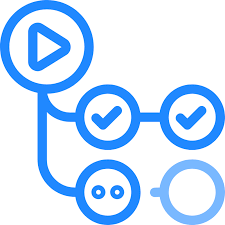
11. GitHub Actions
GitHub Actions allows teams to automate software workflows directly from their repositories. They can build, test, and deploy applications using workflows that trigger on any GitHub event, whether it’s a push, pull request, or release. Workflows can run on a variety of operating systems and environments, making it easier to test and deploy across multiple platforms without switching tools.
The platform also integrates with containers and other services, letting teams orchestrate complex deployments or run multi-container tests with relative ease. Developers can use existing actions from the GitHub Marketplace or create their own, connecting various tools and APIs to streamline the full deployment lifecycle. Live logs and real-time monitoring give visibility into the workflow process, reducing guesswork and helping teams quickly address issues.
Key Highlights:
- Automate workflows triggered by GitHub events
- Supports multiple operating systems and containerized environments
- Matrix builds for parallel testing across versions
- Integration with GitHub Packages and external APIs
- Real-time logs and monitoring for workflow runs
Who it’s best for:
- Teams using GitHub for code hosting and version control
- Developers managing CI/CD pipelines directly from their repositories
- Projects that require multi-platform testing and deployment
- Teams looking to integrate existing tools into GitHub workflows
- Organizations that want visibility and traceability in workflow execution
Contact Information:
- Website: github.com
- Twitter: x.com/github
- LinkedIn: www.linkedin.com/company/github
- Instagram: www.instagram.com/github
12. GitLab
GitLab combines source code management with CI/CD automation in a single platform, letting teams manage the full software lifecycle without switching tools. Teams can set up pipelines that handle building, testing, and deploying applications across multiple environments while keeping everything connected to the repository. This integration simplifies coordination between development, operations, and security teams.
It also provides tools for automating security scans, tracking issues, and monitoring pipelines in real time. Developers can rely on built-in workflows or customize them to match their specific needs, reducing repetitive tasks and making it easier to keep deployments consistent. With everything accessible in one interface, teams get a clearer view of their projects and can respond faster to changes or failures.
Key Highlights:
- Integrated source control and CI/CD pipelines
- Automated security and compliance checks
- Real-time pipeline monitoring and logs
- Customizable workflows and templates
- Unified platform for development, operations, and security
Who it’s best for:
- Teams looking for an all-in-one DevSecOps platform
- Organizations using Git for version control
- Developers managing CI/CD pipelines and deployments
- Teams that need security checks integrated into development
- Groups aiming to streamline collaboration across roles
Contact Information:
- Website: gitlab.com
- Facebook: www.facebook.com/gitlab
- Twitter: x.com/gitlab
- LinkedIn: www.linkedin.com/company/gitlab-com
13. Puppet
Puppet provides a platform for managing infrastructure across servers, cloud, and edge environments using desired state automation. Teams can define policies for how systems should be configured and let Puppet enforce those policies automatically, helping maintain consistency and compliance across complex setups. This approach reduces manual intervention and ensures that infrastructure changes are predictable and auditable.
In addition to configuration management, Puppet supports workflow automation and integrates with DevOps toolchains to streamline deployments. Teams can monitor compliance, detect deviations, and remediate issues before they become critical. By handling routine tasks and policy enforcement, Puppet allows engineers to focus on higher-level operations and scaling infrastructure effectively.
Key Highlights:
- Desired state automation for hybrid infrastructure
- Policy-driven configuration management
- Continuous compliance and audit reporting
- Integration with DevOps pipelines and tools
- Visibility into changes and system state
Who it’s best for:
- Teams managing large-scale, hybrid environments
- Organizations needing consistent compliance and security
- DevOps teams seeking automated configuration and remediation
- Enterprises coordinating across cloud, on-prem, and edge systems
- IT teams looking to reduce manual operational tasks
Contact Information:
- Website: www.puppet.com
- E-mail: sales-request@perforce.com
- Address: 400 First Avenue North #400 Minneapolis, MN 55401
- Phone: +1 612.517.2100
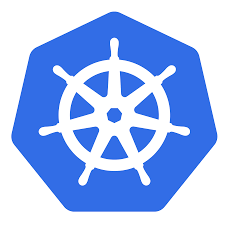
14. Kubernetes
Kubernetes is basically the go-to tool if you’re running containerized apps at scale. Think of it as a smart manager for all your containers – you group them into Pods, and Kubernetes handles the messy stuff like deployment, scaling, and keeping things running smoothly. Load balancing, storage, secret management? Covered. This way, your team can focus on building and improving apps rather than babysitting infrastructure.
It’s also got some neat “self-healing” tricks: if a container crashes, it restarts it; if something goes wrong during an update, it can roll back automatically. And the flexibility is awesome – you can run workloads on any cloud, hybrid setup, or on-prem environment. Features like horizontal scaling and automatic resource packing mean your apps use what they need, without you having to constantly tweak settings.
Key Highlights:
- Automated deployment, scaling, and management of containers
- Self-healing and rollback capabilities
- Service discovery and load balancing
- Storage and secret management
- Extensible platform with broad ecosystem support
Who it’s best for:
- Teams running containerized applications across multiple environments
- Organizations needing scalable, automated infrastructure management
- DevOps teams managing hybrid or multi-cloud setups
- Engineers looking to optimize resource usage and availability
- Enterprises adopting microservices and CI/CD pipelines
Contact Information:
- Website: kubernetes.io
- Twitter: x.com/kubernetesio
- LinkedIn: www.linkedin.com/company/kubernetes
Conclusion
After looking at a range of Terraform alternatives, it’s clear that there isn’t a one-size-fits-all solution. Each tool brings a different approach to managing infrastructure, whether it’s through policy-driven automation, container orchestration, or integrated CI/CD workflows. The right choice often depends on how a team works, the complexity of their environment, and the level of control or automation they need.
Exploring these alternatives highlights how diverse the landscape has become. Some platforms excel at simplifying collaboration and governance, while others focus on scaling and self-healing capabilities. By understanding the strengths and trade-offs of each option, teams can make more informed decisions and shape an infrastructure setup that fits their workflow rather than forcing their processes to fit a tool. It’s less about picking the “best” and more about finding what aligns with how they operate day to day.


